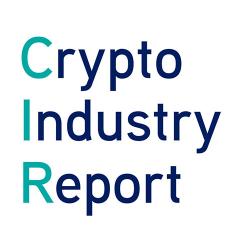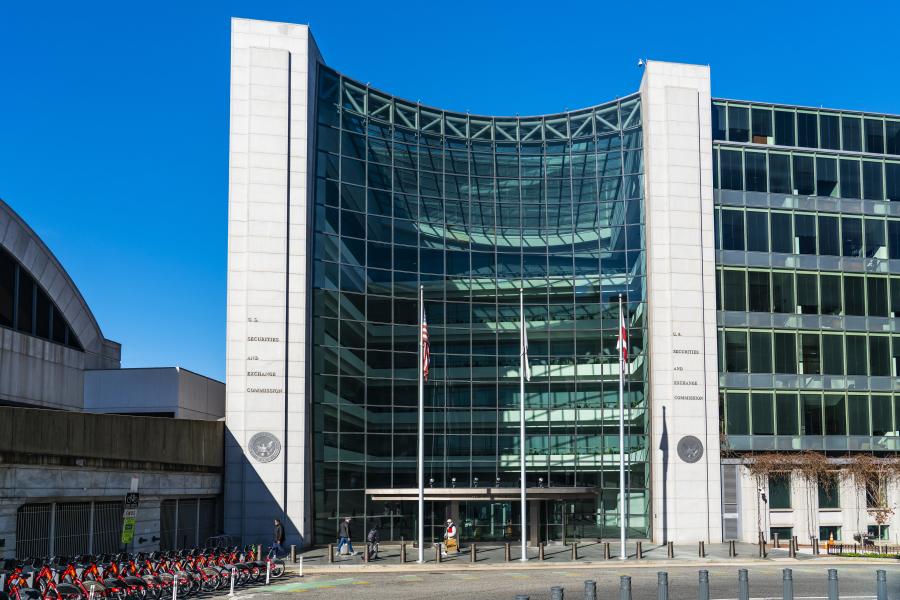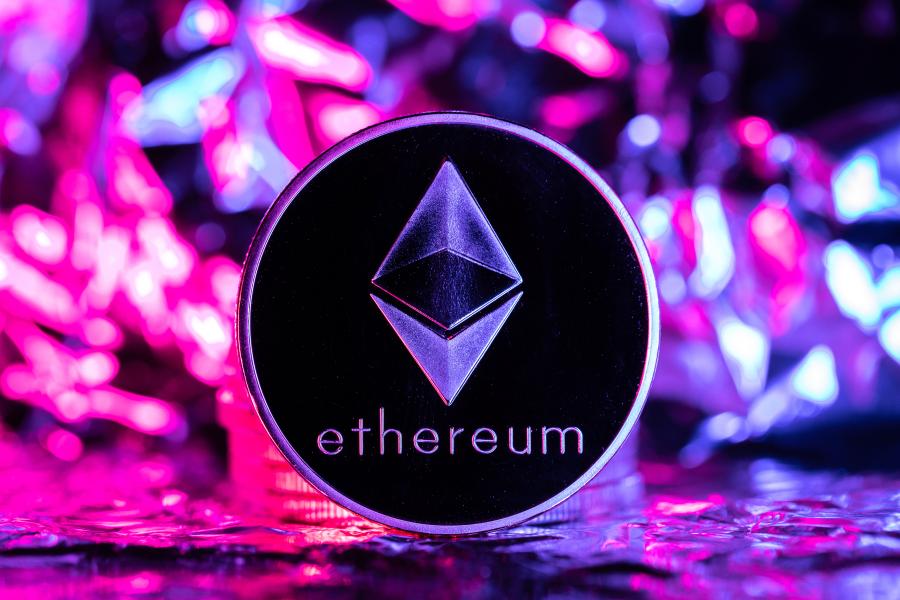BlackRock fever: The ETF filing spree and institutional appetite
This week, our blockchain experts assessed the following topics:
- BlackRock fever: The ETF filing spree and institutional appetite
- Is failed crypto exchange FTX to be revived again?
- MakerDAO’s DAI: Less USDC but more RWA
- IMF Working on Global CBDC Platform Concept
Our bi-weekly Crypto Industry Report provides you with valuable information on the global crypto industry - picked and analysed by our blockchain experts.
BlackRock fever: The ETF filing spree and institutional appetite
New York-based multinational investment company BlackRock with $10 trillion assets under management, on June 15, filed for a potential spot Bitcoin exchange-traded fund (ETF) with the Securities and Exchange Commission (SEC) despite the regulators’ history of disapproving such applications. The application by BlackRock allegedly helped Bitcoin snap out of the crypto winter and trade at over $30,000 in the last two weeks.
In its spot Bitcoin ETF application, BlackRock also added a surveillance-sharing agreement that would help tackle any issues broached by the SEC regarding BTC market surveillance and manipulation. Although the SEC is well-known for rejecting Bitcoin spot ETF applications, it also has a strong history of approving BlackRock’s non-crypto ETFs. BlackRock currently boasts a 575-1 approval rate from the SEC, fuelling optimism amongst some crypto enthusiasts.
Despite rejecting Bitcoin spot ETFs, the SEC favours futures-based ETFs since it can monitor crypto futures ETFs listed on the Chicago Mercantile Exchange (CME). BlackRock’s inclusion of a surveillance-sharing agreement would mean that any exchange that lists a Bitcoin ETF will gain access to the spot location where the underlying asset is being traded and therefore acquire important identity and trading information.
Following BlackRock’s filing, two U.S.-based asset management companies, WisdomTree and Invesco, also filed applications for their spot Bitcoin ETFs. WisdomTree is resubmitting its spot Bitcoin ETF application after the SEC rejected it. On the other hand, Invesco is reintroducing its ETF after pulling the plug on its Bitcoin futures ETF in 2021. It’s also worth noting that the filing spree is happening at a time when the same U.S. regulator has been on a suing spree of major crypto exchanges such as Binance and Coinbase for allegedly operating unregistered exchanges.
Inspired by the various ETF applications, Fidelity Investments, another big asset management firm with $4.5 trillion assets under management, filed a Bitcoin spot ETF application with the SEC. Moreover, Fidelity Investments is drafting a proffer to acquire Grayscale, the most prominent digital asset management company. The news about BlackRock filing for a spot Bitcoin ETF and rumours around Grayscale’s acquisition also caused the share price of Grayscale Bitcoin Trust (GBTC) to rise amidst anticipation regarding changing the fund into an ETF.
As a result, the GBTC share price discount also narrowed compared to its net asset value, which is the lowest the discount has gone since September 2022. The share price surge was influenced by investor optimism around the ability to redeem funds in the near future and the possibility of Grayscale winning an ongoing lawsuit against the SEC where it’s seeking to convert GBTC into an ETF.
With an all-time high interest in crypto assets by traditional financial players, it comes as no surprise that Fidelity, Citadel, Charles Schwab, Sequoia, Virtu Financial, and Paradigm have backed EDX, a recently launched crypto exchange. The EDX exchange is a trading platform where client assets aren’t directly managed. Furthermore, the crypto exchange will introduce retail-only quotes.
Nasdaq also announced it’s looking to launch its own crypto custody service platform at the end of Q2 2023 and is currently working on getting all the necessary approvals. Interestingly, Nasdaq isn’t the only TradFi to join the crypto custody bandwagon. It was recently reported that the Deutsche Bank applied for a digital asset license that would allow it to function as a crypto custodian institution in Germany. And in the recently crypto-friendly Hong Kong, the largest bank in the region, HSBC, now enables its clients to trade Bitcoin and Ether.
The move by traditional finance institutions is linked to the increased demand from institutional investors, which has seen TradFi firms step up to bridge the gap, thus signaling a boost in the mainstream adoption of cryptocurrencies. What’s even more interesting is that these moves are occurring just about 300 days before the next Bitcoin halving.
Is failed crypto exchange FTX to be revived again?
John Ray III, the new CEO of the defunct crypto exchange FTX which collapsed in November 2022, has sparked talks of reviving the crypto exchange in an interview he did with the Wall Street Journal. Ray first shared the news about reviving FTX in January and again in April when it was announced that the exchange had recovered $7.3 billion and was working on a plan to refund its creditors and customers.
By the time FTX filed for bankruptcy last year, it had collected about $3.3 billion worth of assets, and continued recovery efforts saw the company recover $800 million in cash and another $600 million in investments and settlements receivable. FTX’s biggest gain was in its ‘category A crypto’ tokens with liquid and large markets that saw it regain control of over $4 billion of digital assets, coupled with a recovery in digital currency prices, which put over $1 billion back into FTX’s account.
The company intends to conclude its assessment by the end of June and advise on the possibility of restarting its operations in 2024.
MakerDAO’s DAI: Less USDC but more RWA
Although DAI is considered the biggest crypto-backed stablecoin issued and managed by a decentralised autonomous organisation (DAO), crypto sceptics have been reluctant to call it a fully decentralised stablecoin as it has historically been backed on a 1:1 ratio to USDC. Stablecoins enjoy their price stability by being backed by a fiat currency, a precious metal, a cryptocurrency, or an algorithm. DAI had its value largely pegged to USDC, a centralised stablecoin backed by fiat money and issued by Circle.
However, DAI has significantly reduced its reliance on USDC as collateral since the beginning of 2023. DAI’s USDC collateral was $2.4 billion then, but that has currently dropped to nearly $520 million. Even with the USDC exposure rundown, what remains unclear is whether DAI will finally be considered a truly decentralised stablecoin.
Although the project has some exposure to USDC, the rundown of USDC as collateral resulted from MakerDAO’s interest in diversifying its balance sheet to include real-world assets (RWA). RWAs are tangible assets that ‘live’ in the physical world but can be brought on-chain. For instance, MakerDAO has so far transferred $500 million worth of USDC to Coinbase Custody to earn returns and used around $1 billion of its USDC reserves to buy U.S. Treasury bills. While the tokenised U.S. government bonds might be held on-chain, they are still controlled by a centralised entity that hosts the treasury bonds.
While MakerDAO’s latest move might not make DAI a purely decentralised stablecoin, the move to RWAs is quite exciting. It provides the stablecoin with an excellent avenue to generate some interest because treasuries currently pay substantial interest.
IMF Working on Global CBDC Platform Concept
The International Monetary Fund (IMF) is working on a global central bank digital currency (CBDC) platform to aid cross-border transactions. The news was shared by Kristalina Georgieva, IMF’s Managing Director, during a conference in Rabat, Morocco. Such a platform would allow countries to enforce capital controls and compliance checks while cutting down on payment costs. Given that the platform would be a blueprint for cross-border CBDCs, it would strengthen and guarantee greater interoperability, safety, and efficiency in cross-border payments.
And while still on the topic of CBDCs, the Latin America and Caribbean (LAC) region is witnessing an increased interest in CBDCs, even with varying crypto utilisation. So far, several LAC countries have made great strides in introducing CBDCs to either boost the payment systems’ strength and financial inclusion or reduce cross-border remittance costs.
Although many countries outside the LAC region are yet to embrace CBDCs, the IMF offered a few highlights on how countries can effectively manage crypto risks while still adopting the use of CBDCs and the innovation they offer. One such recommendation was for countries to focus on the basic drivers of crypto demand and improve transparency instead of outlawing them.
Share post

Related Posts

To be continued: SEC pushes back at Coinbase
SEC pushes back against Coinbase's claim of no regulatory jurisdiction, stating the crypto exchange knowingly violated securities laws. Meanwhile, Gemini, owned by the Winklevoss twins, files a lawsuit against Digital Currency Group and CEO Barry Silbert alleging fraud and deception following the collapse of a lending venture. The Bank for International Settlements survey reveals that 93% of central banks are working on Central Bank Digital Currencies (CBDCs) which are seen as potential geopolitical policy tools and a challenge to the dollar's dominance. The race for a Bitcoin ETF intensifies, with BlackRock refiling its application featuring Coinbase as the market surveillance partner, as the Grayscale Bitcoin Trust's discount to net asset value narrows, potentially indicating the transformation into a proper ETF.

SWIFT explores blockchain interoperability
SWIFT has partnered with Chainlink to experiment with leveraging its infrastructure for transferring tokenized value across blockchain networks. The trials will address interoperability, regulatory challenges, and operational drawbacks for financial institutions in a blockchain environment. Chainlink will provide connectivity between private and public blockchains. SWIFT's findings will be published later this year.

China wants an Internet 3.0, while Hong Kong gears up for crypto trading launch
China is striving for advancement in Internet 3.0 technologies, with Beijing's white paper outlining plans to invest in the development of the metaverse and Web3 tech such as non-fungible tokens, but not cryptocurrencies due to the country's previous ban. Meanwhile, Hong Kong is launching its new crypto trading regulations, allowing retail investors to participate from June 1, 2023, with exchanges like Huobi Hong Kong beginning to offer spot trading to retail and institutional clients. Furthermore, the Cybersecurity and Technology Crime Bureau of the Hong Kong Police Force is launching a metaverse platform, 'CyberDefender', to educate the public about potential threats and crime prevention in the metaverse.

BRC-20: Innovating on Bitcoin is the new cool
A new Bitcoin “token standard” called BRC-20 is the hottest thing right now in the crypto space. It was introduced in March 2023 by a pseudonymous person called Domo. Bitcoin Request for Comment 20 (BRC-20) is an experiment that brings fungible tokens to the Bitcoin blockchain using the Ordinals protocol. Ordinals rely on ordinal theory, enabling the identification and tracking of individual satoshis within Bitcoin's existing supply, while also allowing them to be inscribed (associated) with data. Through this technique, satoshis (sats) are given ordinal numbers starting with zero. Anyone can add a script file to a sat to create and transfer a BRC-20 token on the Bitcoin blockchain. BRC-20 tokens are created using three functions: deploy, mint, and transfer.

US versus EU: Giants fighting for regulatory clarity
It is official now: The European Parliament voted overwhelmingly in favour of Markets in Crypto Assets (MiCA), legislation that will guide the crypto sector in all 27 European Union member states. 517 parliament members voted for it, while 38 voted against it. This approval makes Europe the first continent with comprehensive rules for cryptocurrencies. Also, it means that all EU member states will have unified crypto regulations. So, if a crypto business is approved in one EU member country, it could easily expand operations to another member state. The EU’s milestone was lauded by Binance as well as Kraken and Coinbase.

Ethereum: Another milestone reached with the Shanghai Update
On April 12, 2023, Ethereum successfully executed the planned Shanghai update also known as Shapella. The upgrade allows validators to unstake their staked ETH and withdraw their rewards, as well as staked ether if chosen. Now that another level of uncertainty has waned for the biggest smart contract blockchain, this new feature could attract more investors to stake their ether.

CFTC versus Binance:
Clash of the titans
The world’s leading crypto exchange by volume, Binance, alongside its CEO, Changpeng Zhao, and ex-Chief Compliance Officer, Samuel Lim, are being sued by the US Commodity Futures Trading Commission (CFTC).

Stablecoin USDC briefly lost its
peg. What do we learn from this?
One of the top stablecoins by market cap, USD Coin (USDC), de-pegged briefly from the US dollar on March 11 following the collapse of Silicon Valley Bank (SVB). Circle, the stablecoin’s issuer, held $3.3 billion in USDC reserves with the bank, which caused panic as investors rushed to withdraw their funds, assuming USDC could implode because of insufficient backing. However, the amount represented less than 8% of the stablecoin’s reserves.

Ethereum Shanghai upgrade pushed to April: Will there be too much selling pressure?
Ethereum stakers have been eagerly awaiting the Shanghai upgrade, which will enable them to withdraw their staked ether. Stakers’ funds have been locked since Ethereum introduced the proof-of-stake Beacon Chain in December 2020. The upgrade was originally slated to take place sometime in March but was pushed by about two weeks to April during a recent execution layer meeting.

Are regulators trying to make up for it by cracking down?
Following the infamous events of 2022, US regulators are turning up the heat on crypto services and products in 2023. One of the services they have targeted recently is custodial crypto staking, a process whereby customers have a financial service provider lock up their coins with a blockchain protocol over a certain period of time in exchange for rewards. This comes as no surprise since the SEC’s chairman, Gary Gensler, previously said that crypto staking looks very similar to lending. US crypto exchanges that offer this service are, therefore, in the SEC’s line of fire.